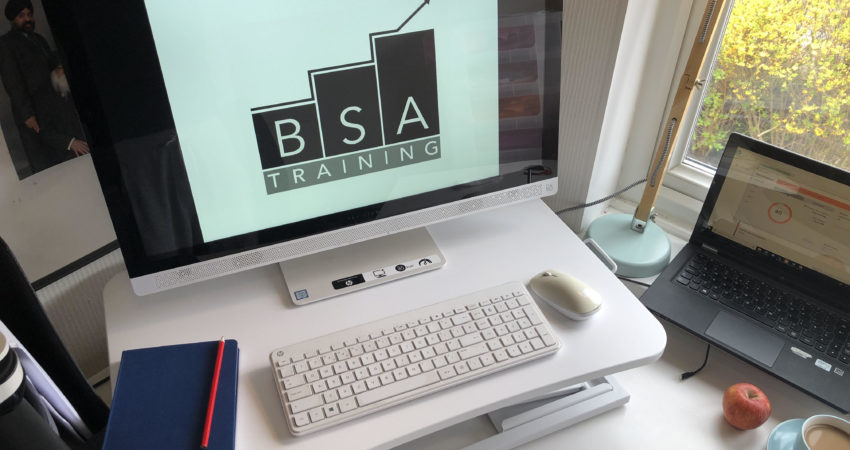Although this will be a challenge to many, there are actually lots of benefits to working remotely. It can increase productivity and reduce costs to the business. It provides staff with greater flexibility and job satisfaction. There’s no more commuting, so reduced costs and stress, and people have a better overall work-life balance.
Since going self employed ten years ago, I’ve had to do a lot of my work from home. Here are some tips based on my experience to help you not only manage, but boss working from home:
- Dress to impress
Wearing the right clothes is so important for getting in the right frame of mind. It’s amazing how making yourself look business-like spurs you on to getting in the zone and getting work done.
- Set goals
I always set myself goals for the day – a man without a goal is like a ship without a rudder. Think about what a successful day would look like and what you want to have achieved by the end of it.
- Listen to your body
You know when you’re most productive, so make a plan for the day to suit your body clock. I’m a morning person, so I start early and will tackle the thing I least want to do (yes – eat the frog first!). I try to have a regular schedule with a clear start and finish time to ensure a good work-life balance, happy customers and happy family members (and in turn, a happy Bobby).
- Have the right set-up
Make sure you have the right resources to do your job. You’ll need the right phone, computer, software and printer, but you might need a few extras. To help with occasional problems with my back, I’ve recently purchased a leaning chair, and when that doesn’t work I use an adjustable desk that lifts up so I can stand and type.
If possible, try to find a dedicated space or room to do your work. It will help you to avoid ‘work creep’ and keep your work and home life separate.
- Take a break to refuel and recharge
Take regular breaks from the computer and phone to have refreshments and get some fresh air. Keep yourself fuelled and hydrated to help maintain energy and concentration levels. I am a bit of a grazer so I will regularly break from what I am doing to have a drink or healthy snack.
Step away from your desk, though. This gives you time to take a break. You might come back with solution to the problem or be able to look at problem much more clearly.
- Exercise
Working out increases blood flow and hence brain function. With all gyms now closed, I am opting for a walk, run, cycle ride or taking my boy for a kick about. I try to time it just after lunch so it breaks up the day, addresses the post-lunch lull and re-energises me for the afternoon.
- Interact
Know where to go for help or a second opinion. When it is just you, you can easily get stuck. Ever tried to brainstorm on your own? Remember creativity thrives with the interaction of people all offering a different ideas and perspectives. Share your ideas with a trusted colleague friend or family member and seek feedback.
- Socialise
It is easy to feel lonely and isolated when working alone. So socialise with your colleagues. If you’re an extrovert like me, you’ll find working alone hard, as you rely on drawing energy through interacting with people and the environment. So I speak to my associates, customers and suppliers often, and not always about work. I am no expert but there are some amazing platforms like Zoom, Microsoft Teams and Apple Facetime that allow you to have virtual team meetings and morning huddles. One of my clients has set up a Friday afternoon virtual pub – what a great idea!
- Over communicate
Now we’re having to work from home, we need as much interaction with our colleagues and customers as possible. Tell your team and line manager (or everyone who needs to know) what you are working on, your availability to help others and anything you have achieved.
- End with routine
I like the end my working day by doing three things. Firstly, I reflect on how they day has gone and consider what worked well and what I’m happy with. Secondly, think about what didn’t work well and what I’ve learned that might help next time. Finally, I like to think about what I’m going to do tomorrow (well some of it), so I plan some of the first few tasks of the day.

Comments (0)